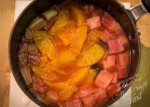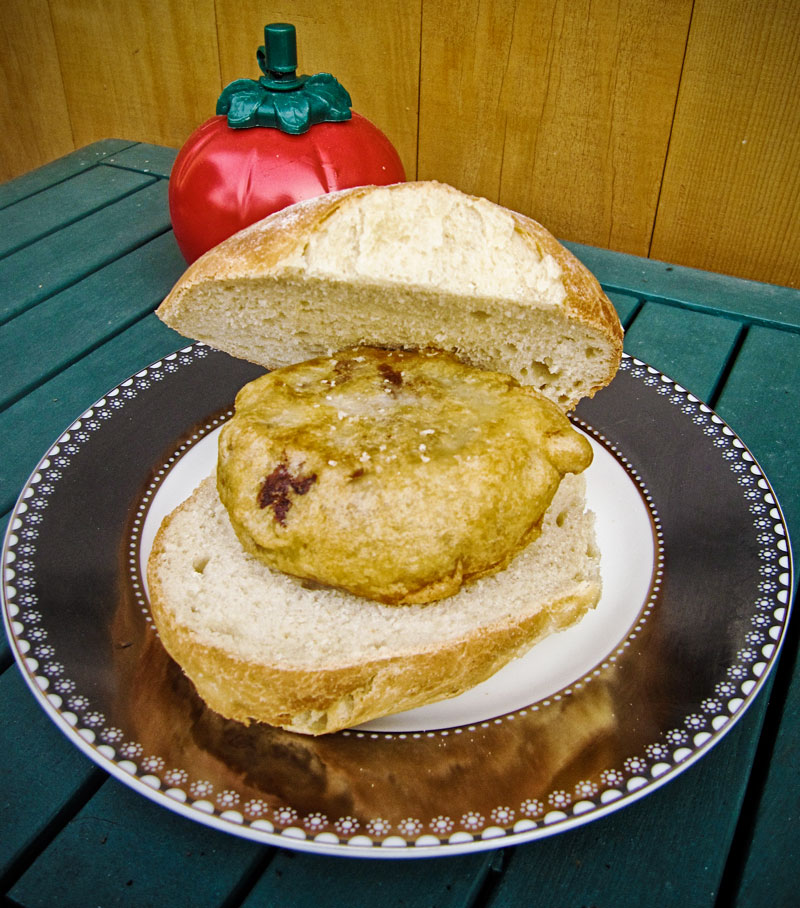Brazilian wild duck à l’orange
Actually, this is a slightly misleading title. The duck wasn’t from Brazil (it was however, pretty wild, coming as it did from near Preston*), and it’s not your classic duck à l’orange either. But hey, it was absolutely delicious, and as smooth and fluff-free as any Brazilian you’re likely to find in this country. Let me explain…
The game season somewhat passed me by this year: I’ve placed a few bits and pieces in the freezer which will make an appearance for a special occasion, but have been lacking in feathered friends to feast upon. So when a friend contacted me to ask whether I’d be interested in a wild duck, I jumped at the chance. I’d have been quackers not to…
He explained once of his colleagues is a wildfowler, so at this time of year he often comes into work with a bunch of mallards in the back of his car. This particular specimen was a very fine fellow… a good weight, beautiful plumage, cleanly shot. I was very grateful, but after taking receipt realised I’d have to pluck the bugger. I left it hanging for a couple of days in a cool place, and put the plucking to the back of my mind as a busy working week flew by.
I’d picked up a handful of wonderful blood oranges from Bill the greengrocer in Todmorden Market in late January, along with my perennial local favourite, Yorkshire forced rhubarb. These wonderfully seasonal delights sat for a few days at home, teasing me as I mulled over what they’d be best used with. I really fancied pairing the two of them for something lip-smackingly tart and sweet, inspired by Miss South’s award-winning Bloody Old Lady marmalade from last year (which, despite rationing, I sadly finished last month).
So when the mallard popped up I thought a simple compote would provide the perfect foil its wild gamey flavour. All I did was to roughly chop the rhubarb stalks, halve the orange segments, add a tablespoon or two of Demerara sugar and a splash of cloudy apple juice, then heat for a couple of hours with a cinnamon stick and a couple of star anise. After some gentle cooking the fruit fell apart into pastel strands, its sharpness balanced by the spices and a touch of sweetness. That made for a lovely dessert with some natural yoghurt
Cue Saturday night, when I’d promised to cook for my better half, and I suddenly realised I needed a foolproof method to denude the bird. Not fancying a messy pluck in the darkness outside, I stumbled on a video of this unconventional technique from the ever-reliable Hank Shaw from Hunter, Angler, Gardener, Cook.
Rather than describing the technique in great detail, I recommend watching the video. But in brief, once you’ve removed the main feathers from the duck, rather than getting caught up in a maelstrom of down, you dip the carcass in a cocktail of hot water and melted paraffin wax. I had to improvise a bit (using half a bar of my favourite Fjällräven Greenland wax… is this the first time it’s been used in the kitchen, or does that proud Swedish hunting tradition mean it’s a regular culinary assistant in the frozen north?) but the whole process was dead easy.
Once the down was coated in a thin film of wax I yanked it straight out and plonked it into a bucket of icy water. Like magic (in fact, like Ice Magic, if anyone remembers that) the whole thing sets into a hard shell around the carcass. Removing the final shell of wax and down was as easy as peeling an orange… and it left skin as clean and dimpled as one too. A DIY wildfowl Brazilian… plucking brilliant!
I only used the breasts, which I delicately removed and rubbed with sea salt and freshly ground pepper, before sealing and searing it in my newly seasoned Mermaid** skillet. I’d had wild duck breasts a couple of weeks before at El Gato Negro Tapas, where the head chef, Simon Shaw, had recommended they needed to be treated with a delicate touch so they wouldn’t overcook and lose their flavour and texture. As we like our meat rare, I flashed them for a couple of minutes in the pan, then rested them for at least twice as long.
There was just time to plate up the veg – a simple selection of creamy parsley mash and some Vichyssoise carrot batons – then I sliced the duck. The deep magenta meat quivered almost as much as I did as I spooned the spiced winter fruit over it… the aroma was stunning and it looked as pretty as a picture. Thankfully the taste was equally good… incredibly tender, rich duck was given a light kick from the sharp, spiced notes of the rhubarb and blood orange. Accompanied by a bottle of Spanish red (a delightful Quinta Milú Ribera del Duero from Hangingditch) this was the perfect dish for a freezing cold January night… seasonal, (mostly) local, and bursting with wonderfully rich, complimentary flavours. I can’t recommend it highly enough; indeed I might open a salon to wax the local wildfowl population on a more regular basis…
* Wild? I was absolutely livid
** Disclosure: I unexpectedly won this in a Christmas Blogger’s Challenge for my Tongue’n’Cheek pudding… hurray!



















I love the description of the duck brazillian!